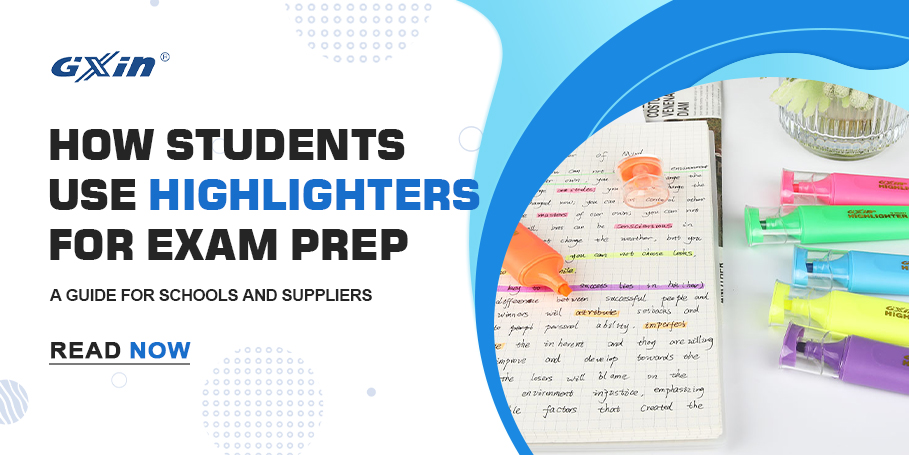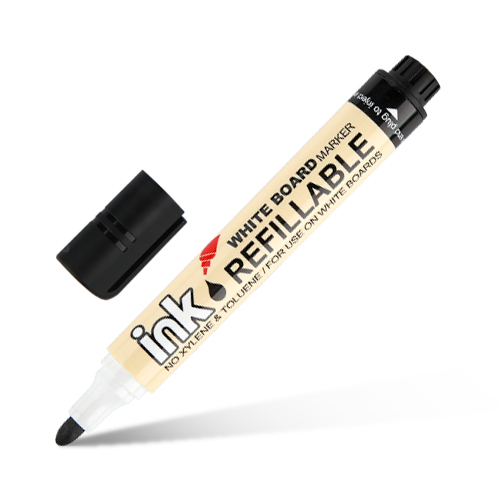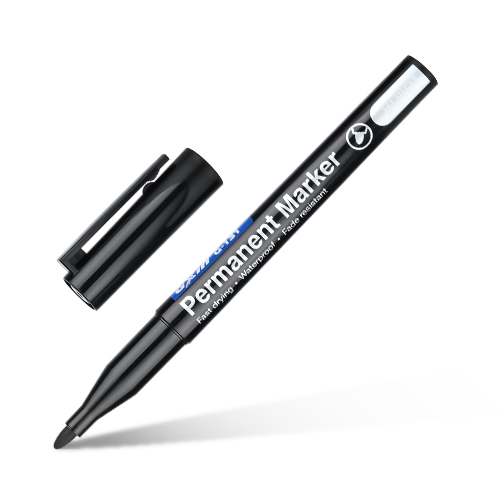
How Students Use Highlighters for Exam Prep: A Guide for Schools and Suppliers
Students face information overload before exams. Without a clear system to organize and retain key points, revision becomes stressful and inefficient. When used effectively, highlighters can transform complex materials into visually accessible summaries—helping students focus, remember, and succeed.
Highlighters are more than colorful pens—they’re cognitive tools that enhance memory and study structure. This guide explores practical highlighting strategies used by students and provides actionable insights for schools and stationery suppliers sourcing effective highlighters.
Let’s explore how students actually use highlighters for academic success—and what features educators and buyers should prioritize.
- Color-Coding for Cognitive Retention Highlighting isn’t just for decoration—it’s a visual system rooted in neuroscience. When students use different colors to categorize information, their brains form stronger associations and recall patterns. For example:
- Yellow: Key terms and definitions
- Green: Examples or formulas
- Pink: Common mistakes or teacher warnings
- Blue: Action items or homework assignments
Using color as a visual anchor helps students mentally group related content. Research shows that color-coding boosts memory retention by up to 25%. Many students now prefer pastel or soft-tone highlighters over neon ones, as they reduce eye strain and make long reading sessions more comfortable.
For schools, offering sets with a wide range of colors allows flexibility across subjects. For suppliers, it’s a clear value-add when pitching highlighter sets for educational use.
- Matching Tip Types to Study Material Not all highlighting is created equal. The shape and size of the tip significantly affect the functionality:
- Chisel tip: Great for textbooks, allowing wide strokes for headings and thin lines for notes.
- Bullet tip: Ideal for underlining or working in narrow margins.
- Dual-tip: A hybrid option offering both precision and coverage, used by students who switch between different note types.
Tip type matters especially for exam prep because students often move between printouts, workbooks, and notebooks. Teachers also report that students using finer tips tend to be more precise in their annotation and less likely to over-highlight.
For schools buying in bulk, offering a variety of tip styles ensures suitability across different age groups and subjects. Some brands, like GXIN and MOBEE, offer OEM options with 0.5mm to 4mm tip sizes and dual-head designs.
- Ink Quality: Fast-Drying, No-Smudge, and Safe for Classroom Use One of the most common complaints from students is smudging ink, especially when highlighting freshly written notes. This can ruin study materials and cause frustration.
High-quality highlighters use quick-dry, low-bleed ink that prevents smudging, even on inkjet-printed paper or thin textbook pages. Water-based inks are popular for classroom environments because they’re non-toxic, odorless, and EN71-3/ASTM D-4236 certified—a must for younger students or high-volume users.
Teachers also favor highlighters that won’t seep through workbook pages or stain desks. Some schools have even begun specifying these criteria in their procurement process.
For suppliers, offering safety-certified ink and showcasing technical specs like “5-second dry time” or “no bleed on 80gsm paper” is a competitive edge.
- Group Learning and Peer Study Applications In modern education, learning is collaborative. Students often engage in group study, peer annotations, or shared resource creation. In these settings, highlighters play an organizational role:
- Color-coded peer feedback
- Jointly marked diagrams
- Group mind maps
Durability becomes important—markers should last through dozens of sessions without drying out. Ventilated caps, anti-dry technology, and large ink reservoirs help ensure markers survive being passed around classrooms.
Teachers also use highlighters during active teaching, for board marking, student paper review, or highlighting key questions during mock exams.
For school procurement, this means choosing highlighters with extended shelf life, user-friendly designs, and vibrant but readable ink.
- Real-World Case: How a School Increased Exam Scores Using Color-Based Study Programs One international school in Malaysia implemented a color-coded study program across grades 7–12. They provided each student with a 5-color highlighter set and trained teachers to integrate visual strategies into their lessons.
After one academic year, standardized test scores in science and language subjects showed a 12% improvement. Students reported feeling more organized and confident during revision.
Key implementation points:
- Teachers modeled highlighting strategies during lessons
- Students created color-coded flashcards
- Parents were encouraged to reinforce the system at home
This case demonstrates how intentional highlighter use, supported by proper tools, directly impacts learning outcomes.
- How to Choose the Right Highlighter Set for Your School or Retail Catalog For schools and bulk buyers, here’s a quick checklist:
- ✅ Color Range: Minimum 4 colors, ideally 6–8 for flexibility
- ✅ Tip Variety: Chisel, bullet, or dual tips for multiple needs
- ✅ Ink Quality: Fast-dry, non-toxic, and no-bleed
- ✅ Certifications: EN71-3, ASTM D-4236, ISO9001
- ✅ Packaging: Class packs, reusable cases, logo customization
GXIN and MOBEE offer full OEM/ODM support for educational markets. Options include customized packaging (school logos, motivational quotes), child-safe designs, and environmentally friendly refillable models.
- Marketing Insight for Distributors and Stationery Brands Distributors can position study-focused highlighters as more than stationery—they are “academic performance enhancers.” Here are selling points for marketing materials:
- “Designed for Exam Success”
- “Smarter Highlighting for Smarter Learning”
- “Color Your Notes, Boost Your Grades”
Adding student testimonials, classroom use videos, and before/after study page examples can increase conversion rates on both B2B and DTC channels.
In Amazon-style listings, highlight features like:
- Dual-tip = more value
- 5-second dry = no smudge
- Safe for kids = trusted by schools
Conclusion: Highlighters as Essential Academic Tools As digital learning grows, physical tools like highlighters remain irreplaceable for memory, focus, and student engagement. Whether you’re a school, reseller, or brand owner, offering thoughtfully designed highlighters tailored to real classroom needs can deliver true educational impact.
Want to source student-tested, school-approved highlighters? Contact GXIN or MOBEE for custom options, OEM service, and global shipping support.





